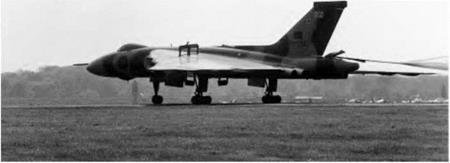Icing
All these mechanical devices are designed to vary the characteristics of an aerofoil according to our needs, but there is one important form of variable camber which is the work of nature and over which we have little control, namely the formation of ice. Brief mention has already been made of this problem in connection with laminar flow aerofoils, but the effects of icing may be far wider than this, affecting as they do, not only the wings, but many parts of the aircraft, the engine intakes and even the propeller. Icing conditions can arise in various conditions of atmospheric humidity and temperature, but they become worse at regions of low pressure such as on the upper surface of wings near the leading edge, and at engine intakes – just the places where any alteration of contour can be most serious. Apart from the effect on shape, the actual weight of accumulation of ice can be considerable and this alone has been the cause of accidents, as has also the breaking off of lumps of ice which may enter the engine or strike other parts of the aircraft.
Many methods both of prevention and cure have been used to combat the ice problem, and they may be divided into three main categories – mechanical methods (such as rubber overshoes alternately inflated and deflated) designed to break up the ice; heating methods (using the heat of the engines or separate heaters) designed to melt the ice on the leading edges of the wings, fins, engine intakes, etc.; and the use of special anti-icing fluid (about the only method suitable for propellers where it is flung out from the hub). All these, necessary
though they may be, mean extra weight and complication, and some of them absorb part of the engine power.
Can you answer these?
If you understand aerofoils you have broken the back of the problems of flight
– so test yourself with the following questions.
1. How does the pressure distribution over an aerofoil change as we increase the angle of attack from negative values to beyond the stalling angle?
2. What is meant by the centre of pressure of an aerofoil?
3. Why is it more convenient to speak of the lift coefficient and drag coefficient rather than the lift and drag of an aerofoil?
4. What is meant by the aerodynamic centre of an aerofoil section?
5. What do you understand by the stalling angle of an aerofoil? Why should one not talk about the stalling speed of an aerofoil?
6. What is aspect ratio and what is its significance?
For solutions see Appendix 5.
For numerical examples see Appendix 3.
|
|
Fig 31 Speed brakes
Speed brakes on the wings of the last Vulcan bomber (now sadly retired). The cables of a braking parachute can also just be seen trailing from the rear.
Introduction
In Chapter 2 we made a study of drag – the force that tries to hold the aeroplane back. In this chapter we shall deal with thrust – the force that opposes drag and keeps the aeroplane going forward. In steady level flight the thrust must be equal to the drag, in order to accelerate the aeroplane it must be greater than the drag, and in climbing it must also be greater than the drag because it will have to support some proportion of the weight. The actual conditions of balance of the forces will be dealt with in the next chapter; it is sufficient at this stage to realise that we must provide the aeroplane with considerable thrust, and that the performance that we can achieve from the aeroplane will be largely dependent upon the amount of thrust that we can provide.
Once the aeroplane is clear of the ground, the only reasonable way of obtaining thrust is to push air or something else backwards and to rely on the reaction to push the aeroplane forwards. This is, in fact, what is done, and to save complication the same system is usually used while still on the ground. The precise physical process by which this reaction is produced and transmitted to the aircraft depends on the type of propulsion system used.
The thrust-provider, of whatever kind it may be, must be supplied with energy. This will usually be in the form of a fuel, which is fed into some kind of ‘engine’ where, in burning, its chemical energy is changed into thermal energy, which in turn is converted into the mechanical work done in propelling the aeroplane against the drag. Methods of providing thrust differ only in the way in which these various conversions are effected, and in the efficiency of the conversion, that is to say in the proportion of useful work got out to the energy supplied.












